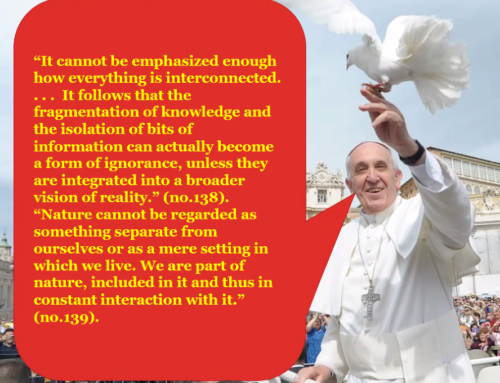Introduction
This is the first in a series of essays exploring the potential of living systems approaches to contribute to the wider mission of diversity and inclusion practice. Living systems approaches are not a recent invention, they have existed in various forms for millennia, but are being rediscovered and reclaimed today owing to their potential to shift entrenched patterns of thinking that keep creating results that nobody wants (Scharmer, 2007). Through eons of time, the living world has evolved millions of species of organisms which each have their own place within highly complex ecosystems, and there is an increasing movement amongst the fields of design, leadership and organization development, social entrepreneurship, healthcare and policy makers to explore how learning from nature helps us not only to solve some of the pressing issues of our day, but also how we live in more harmonious relationships with the planet and with each other.
In contrast to the extremes of the neo-Darwininan view that has legitimized a modern discourse of hyper-competition, living systems approaches recognise that whilst competition of course exists, that it is contained within a much greater pattern of hyper-collaboration that enhances the overall resilience of earth’s ecosystems. The damage humans are doing to the planet ironically reveals less about the competitive aspects of nature, but much more about its interdependencies and feedback loops. This essay explores an overarching question: ‘What might we learn about how Nature organizes herself that we could bring back into our human relationships?’ and attempts to suggest possibilities for D&I through identification of promising practices, as well as potential pitfalls.
Living in a world of superdiversity, and the limitations of machine model thinking
We live in an era of superdiversity, the so-called ‘diversification of diversity’ which was first described by Steven Vertovec in 2007 to explain the impact of global migration in creating many more categories of ethnic and cultural difference than had previously been commonly recognised (Lu, 2014). Coupled with a much greater understanding of the range of neuro-diverse expressions, and combined with rising awareness of non-binary gender fluidity and sexual orientation, as well as visible and non-visible disabilities, not to mention many other categories of difference, traditional metrics- driven approaches are found wanting when it comes to understanding the ever-growing complexity of intersectional identities in today’s world. First coined by Kimberle Crenshaw in 1989, intersectionality was used to describe the blind spots and accompanying injustices created when thinking in terms of single categories of difference, rather than considering their cumulative impact. Crenshaw cites the attempt of Emma De Graffenreid and several other black women to sue General Motors which, whilst offering employment to both black and female employees (black men were employed in manufacturing, whilst white women were employed in administrative work) was doubly discriminatory against black women, who ended up being employed in neither areas of the organisation. Sadly De Graffenreid lost her case as the judge felt it was unfair that she was claiming two categories of discrimination, when her white female or black male colleagues could only claim one! Today, we find that the field of D&I is itself highly intersectional, resisting any overarching discourse as it seeks to straddle numerous, context dependent factors.
‘You think that because you understand “one” that you must therefore understand “two” because one and one make two. But you forget that you must also understand “and”.
– Sufi teaching story, quoted in Donella Meadow’s ‘Thinking in Systems’ (2008)
When it comes to engaging in today’s ever-diversifying world, we need to expand our ways of seeing, thinking, doing and being. In Kurt Lewin’s words ‘you cannot understand a system until you try to change it’ and D&I is certainly not an armchair exercise, and nor is it like fixing a bicycle! Whether as D&I experts or leaders or members of society, we all need to develop requisite skills for engaging with the ‘diversification of diversity’, enabling us to engage with rich trans-contextual tapestries, as though through compound eyes, rather than limit our focus on narrow, isolated metrics or competing identity politics. To this end, eco-systemic approaches are emerging as potential ways forward to addressing and enhancing diversity and inclusion, and are derived from the rich fount of living systems thinking which itself is a blend of environmental studies, indigenous wisdom traditions, embodiment practices, complexity theory, stage development, cybernetics and more, which collectively seek to bring principles from nature to human systems design and development. Simply put, Nature is capable of holding the most amazing array of diversity, and we have much to learn and apply to our own communities and organisations.
When applying a living systems lens, the limitations of the machine model of organisations (and of society) become increasingly apparent. Like the judge in De Graffenreid’s case, the machine model is essentially binary, and therefore represents a system that is inherently biased against diversity and inclusion. This is critical to our understanding of how organisational D&I functions may need to transform themselves along with the systems they are part of. Furthermore, redundancy is minimized (i.e. avoidance of duplication) in the name of efficiency, yet the machine model finds itself poorly equipped to adapt and evolve in step with external changes, because it lacks the requisite variety to do so. By aiming to be hyper-efficient, it cuts out diverse and seemingly extraneous pathways which might otherwise provide a back-up system when the organization comes under threat. Using the picture in the introduction as a metaphor, the machine model, represented by the barbed wire, is a largely static system, slowly weathering through time, unlike the living system of the tendril which through its growing tip can sense its surroundings and intuit new ways forward.

